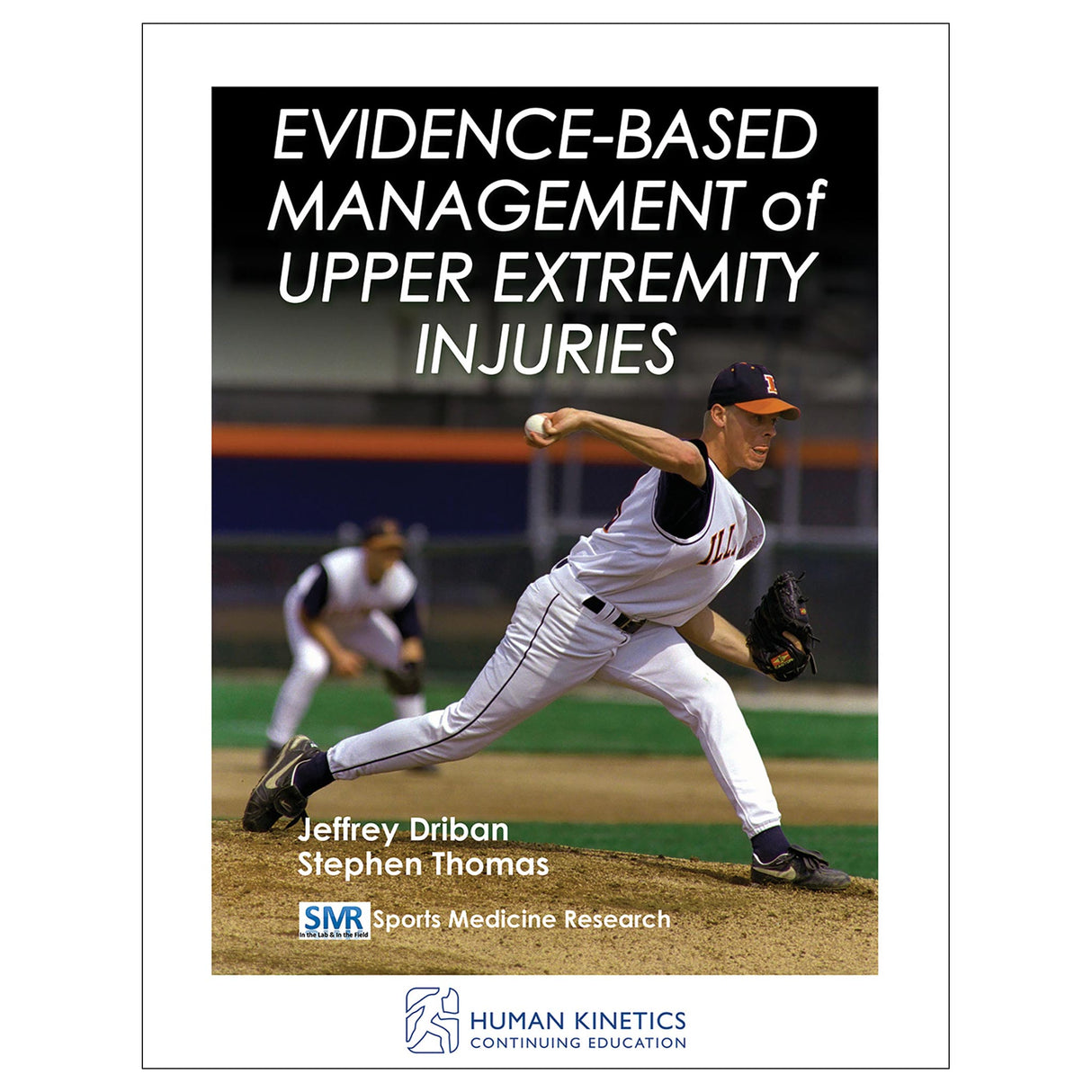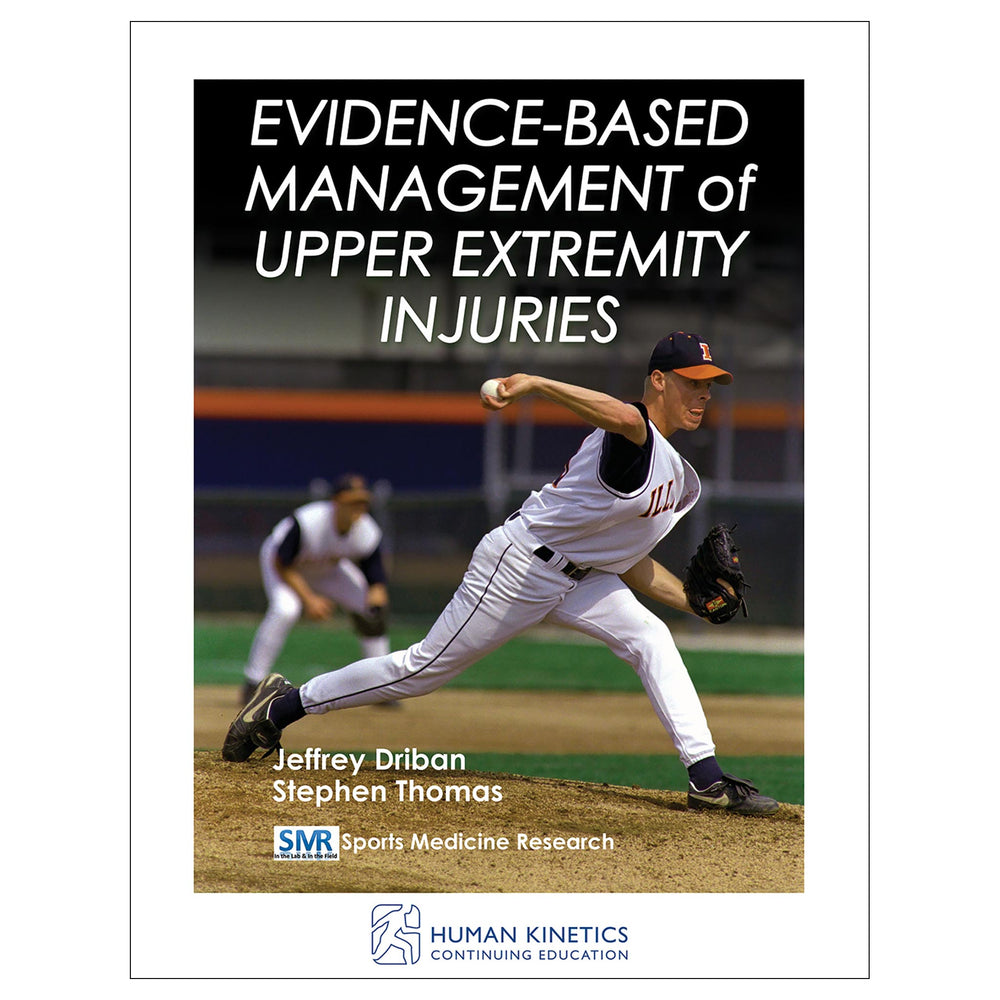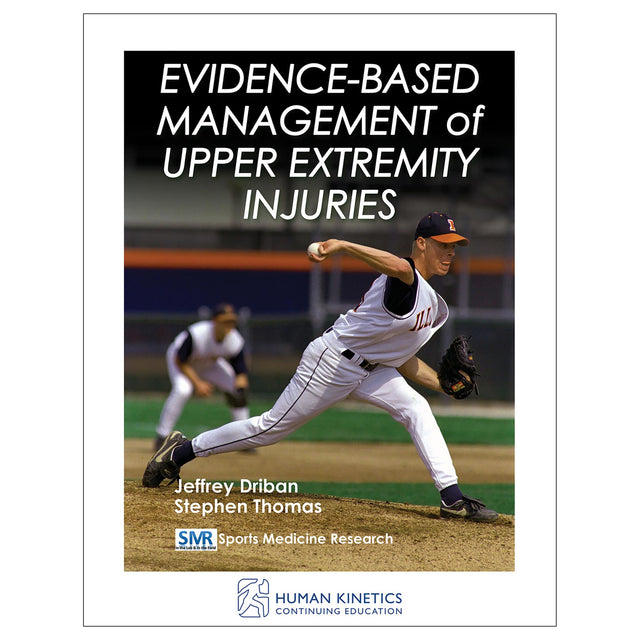Evidence-Based Management of Upper Extremity Injuries Online CE Course
Author: Jeffrey Driban, Stephen Thomas
$75.00 USD
Human Kinetics strongly recommends that you complete your exam within the calendar year of your date of purchase to ensure approved credits do not expire for your organization.
- 21 online articles from Sports Medicine Research
- Online continuing education exam
Treatment and rehabilitation for upper extremity injuries are often based on anecdotal evidence, which makes clinical decisions difficult. A large range of treatment options are thought to improve outcomes; however, not all are truly effective.
Evidence-Based Management of Upper Extremity Injuries Online CE Course provides a series of 21 articles on research regarding upper extremity injuries, demonstrating how athletic trainers and therapists can apply the information from existing studies to their own practice. Using current evidence, you’ll understand how to optimize treatment and rehabilitation techniques for upper extremity injuries and better educate and advise your patients about various treatment options.
This course supports the initiative in the athletic training profession to integrate the best new research and evidence into clinical decision making with the goal of improving patient outcomes.
Once you complete the readings and pass the 105-question exam, you can print a certificate for continuing education credits.
Learning Objectives
- Apply scapular stabilization exercises that promote optimal muscle activation patterns.
- Implement manual therapy and stretching exercises to target upper extremity conditions (e.g., lateral epicondylitis, internal rotation deficits).
- Explain the benefits of corticosteroid or platelet-rich plasma injections as an adjunct to therapy for various upper extremity conditions.
- Implement safe and effective treatment strategies after rotator cuff repair surgery.
Audience
Certified athletic trainers and athletic therapists.Article 2. Rehabilitation Exercises for the Lower Trapezius
Article 3. Differences in Scapular Muscle Activation Ratios During Functional Shoulder Exercises
Article 4. Is EMG Biofeedback Effective at Treating Patients With Shoulder Impingement?
Article 5. Joint Mobilization Improves Posterior Capsule Mobility in the Shoulder
Article 6. Can the Sleeper Stretch Increase Range of Motion and the Subacromial Space?
Article 7. Muscle Energy Used to Improve Posterior Shoulder Tightness
Article 8. Does Myofascial Release Improve Lateral Epicondylitis Symptoms?
Article 9. Kinesiotaping With Exercise Versus Manual Therapy With Exercise in Patients With Subacromial Impingement Syndrome
Article 10. Kinesiotaping Improves Shoulder Symptoms More Than Modalities
Article 11. Education and Interaction May Be the Key to Successful Subacromial Impingement Syndrome Therapy
Article 12. Treat the Spine, Help the Shoulder
Article 13. PRP Injections for Chronic Rotator Cuff Tendinopathy
Article 14. What Is the Best Treatment Option for Calcific Tendinitis of the Rotator Cuff?
Article 15. What Is the Optimal Dose of Corticosteroids for Adhesive Capsulitis?
Article 16. Questionable Long-Term Effectiveness of Physiotherapy and Corticosteroid Injections for Tennis Elbow
Article 17. Can an Additional Restriction of Glenohumeral Abduction After Immobilization Prevent Recurrent Dislocations?
Article 18. Evolution of Nonoperatively Treated Symptomatic Isolated Full-Thickness Supraspinatus Tears
Article 19. Is Early Passive Motion Necessary After Rotator Cuff Repairs?
Article 20. Aggressive Versus Limited Early Passive Exercises After Rotator Cuff Repair
Article 21. Low-Level Laser Therapy With Exercise Improves Shoulder Pain





